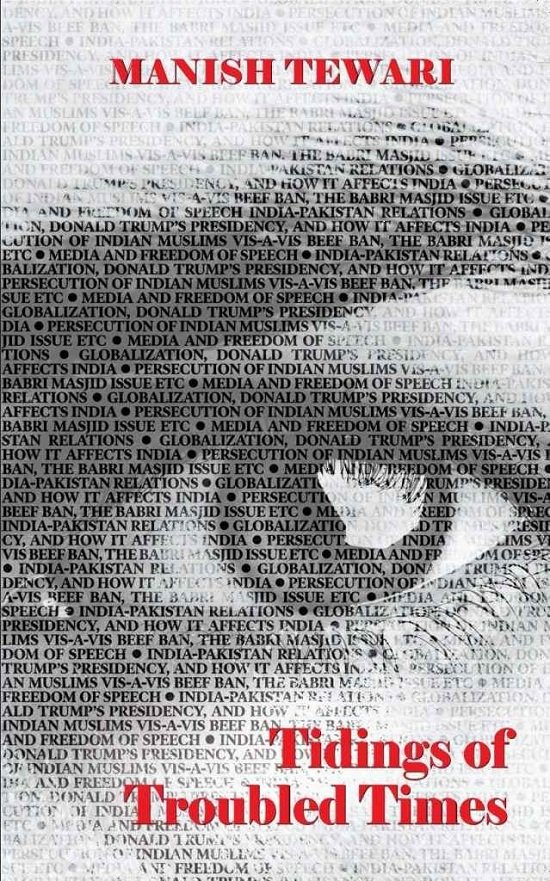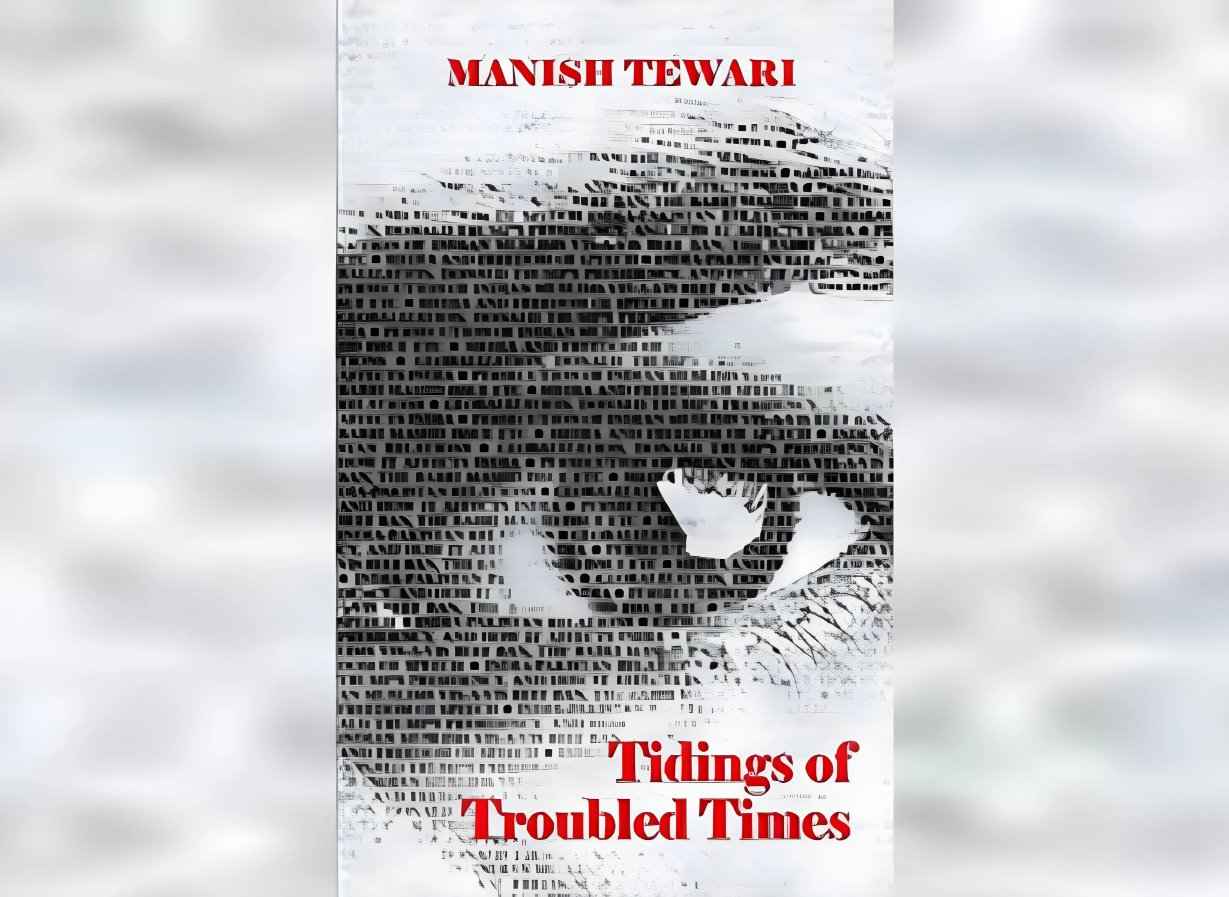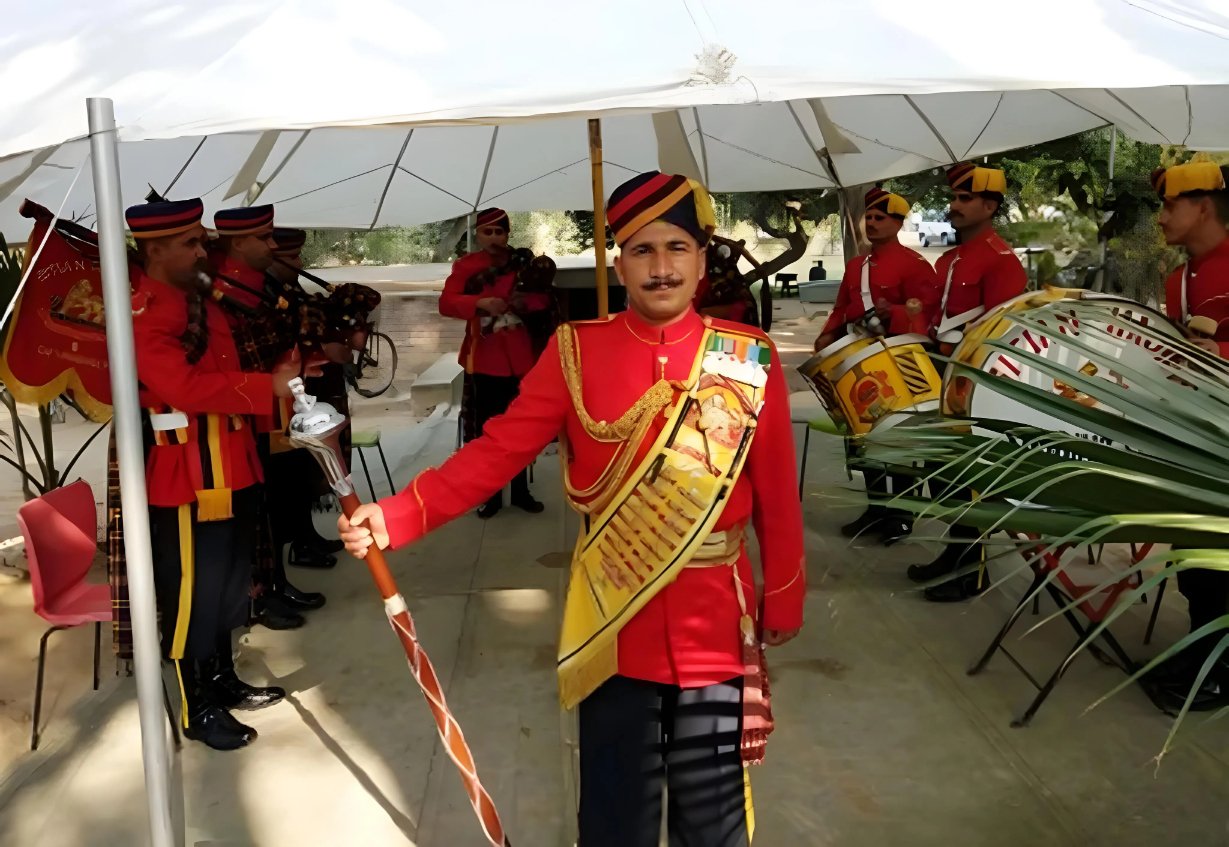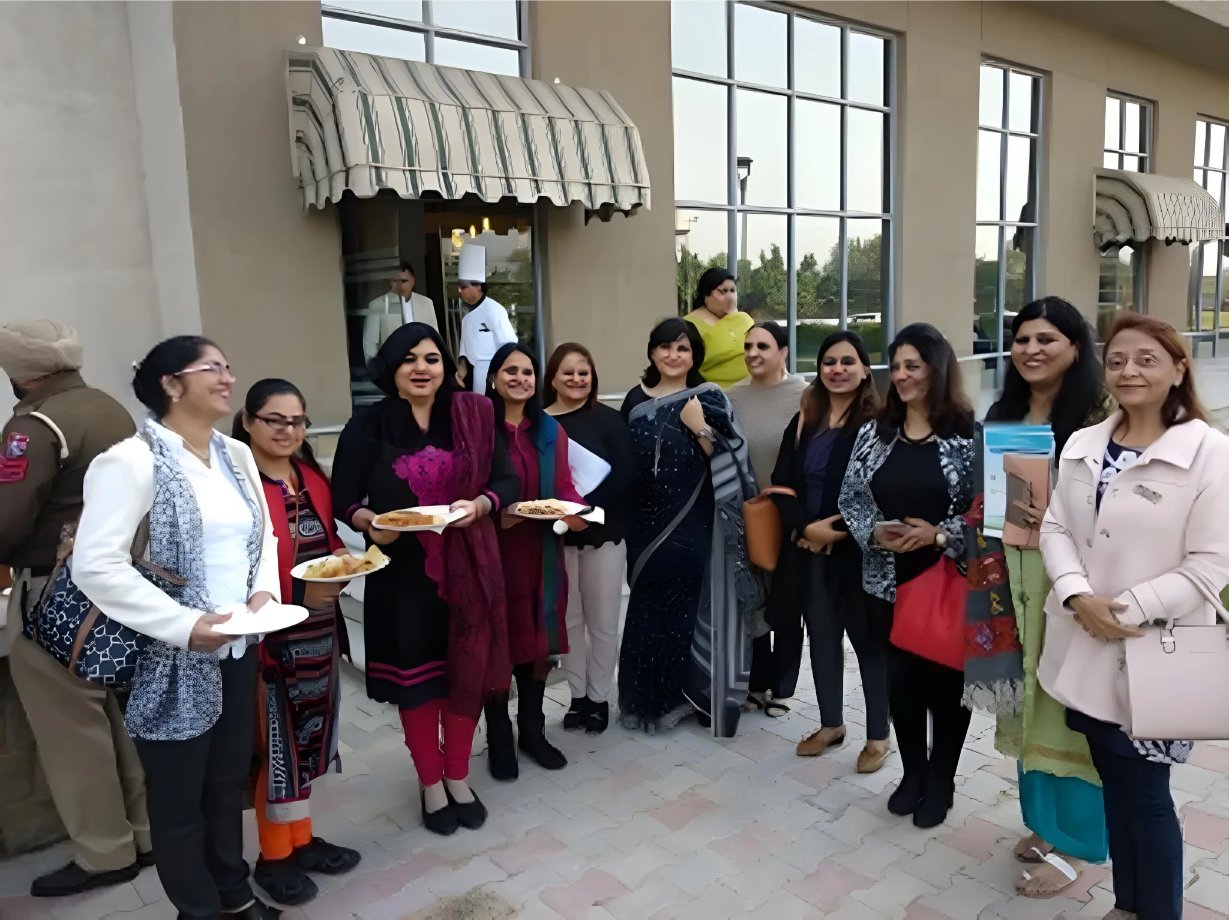A young Army officer, now a much retired Lieutenant General, in good old times joins his new posting in a remote pocket of Dimapur district in insurgency infested Nagaland state after travelling a week by air and road, and the last miles walking. Even before he has time to put up his legs to unwind, he is jolted into action hearing firing from outside. He rushes out and sees the jawans returning the fire. He asks the nearest jawan what is happening. A militant attack, he is told. Do we know the position from which the fire is coming, he asks and promptly comes the reply, No Sir !! Then what are you firing at, he asks. “Sir, ainna nu daraana tain hai naan (Sir, we have to frighten them in any case). The officer is stumped. The attack is subsequently repulsed.
This and many such instances of Punjabi humour in the thick of action were related by Lt. Gen. JL Malhotra (retd.) from his personal experiences while speaking on the subject “What Indian Army Jawan is Made Of ” on the concluding day of the two-day Military Parley at the auditorium of Sector 10 Govt. Museum & Art Gallery on Wednesday. The parley was organized in the run up to the first ever Military Literature Festival to be jointly organized by the Punjab Government and UT Chandigarh Administration from December 7-9.
 Photos By: Life in Chandigarh
Photos By: Life in ChandigarhReciting another incident in another sector, Gen. Malhotra said following withdrawal of his battalion from an operation, the following day he saw a young officer bleeding through his pants and asked him what had happened. “Sir, marihh jaei chhutaran vich chhot laggi hai (Sir, have received a slight wound in the buttocks),” was a casual reply from the officer. When the superior insisted on seeing the wound and the young officer’s pants were lowered he was aghast to see a gaping hole in the back and the officer’s undergarment stuck in it.
The officer was asked why he did not report to a doctor and the reply surprised the superior, “Sir, had I gone to the doctor I would have been withdrawn from the battle front for treatment, and I do not want to miss the action.” On the superior’s assurance, he was treated properly and allowed to continue in battle front positions. The wounded officer during the withdrawal had walked 15 kms and waded through the ice cold water of a river.
.jpg) Lt. Gen JL Malhotra
Lt. Gen JL MalhotraSuch humour and valour you won’t see anywhere but in the armed forces, Gen Malhotra proudly told the audience, which also included a large group of school students.
Bridging the Gap
Speaking on “Bridging the Gap” between the armed forces and the civil society, Col. Avnish Sharma (retd.) cited another example of the never say die spirit of the men in uniform. A squadron leader sustained multiple fractures in his ribs, legs and arms while ejecting in a MiG crash. Recuperating in hospital, he requested for a drink from the hospital staff, which was declined. But he insisted on being given Rothmans cigarettes, a favourite with Air Force officers, and this time he had his way.
.jpg) Col. Avnish Sharma
Col. Avnish SharmaCol Sharma recollected another mirthful moment in the context of army service as a cadet, when their instructor while introducing himself said he was a man of climax and anti-climax. When we asked him how, he replied my first and middle name Jang Bahadur (martial name) is the climax, the anti-climax being my sir name Sharma (pandit).
Unexpected Commission
During an intervention Col. Gurmukh Singh (retd.), now settled in the US, related the most unusual of happenings which won him an unexpected commission in the Army. Coming from a rural background with little proficiency in spoken English, but with some determination, he was a surprise last inclusion in the list of 22 candidates declared passed in the first round of the test.
Since he was hard of hearing from one ear, he was sure to be rejected in the medical. But a day before, family friends helping him out showed him to an ear specialist who cleaned up his ear and promised that his hearing impairment will remain undetected for at least a month. Lo and behold out of the 22 candidates who underwent the medical test 20 candidates failed and Gurmukh was the only one to be given an all clear, while the remaining one candidate was asked to reappear for the medical after a month.
Military Industrialisation
Making a pitch for innovation and out-of-the-box thinking for simple solutions to problems in his topic “Military Industrialisation”, Maj. Gen. Surjit Singh (retd.), who after his retirement has worked with the industry, said the combination of user (armed forces), industry and the academia could go a long way in achieving this goal.
 Maj. Gen. Surjit Singh
Maj. Gen. Surjit SinghGiving a perfect example of innovative thinking by troops on the ground, he said a ropeway was built following the collapse of a regular bridge across a river on way from Gangtok to North Sikkim. The ropeway was at a gradient to allow carrying of heavy loads of supplies up to 150 kg aided by gravitational pull.
Another example he gave was of simulators for training in throwing grenades, especially for cadets, which was developed after years of trying to convince superior officers to go for it to prevent casualties.
Different Perspective
Giving a presentation on “Kargil War – Different Perspective” Brig. Harwant Singh (retd.) felt that India despite winning the Kargil War gained practically nothing, while Pakistan Army got a psychological boost from their perspective that six battalions strength of their Northe Light Infantry were able to tie down a hugely larger Corps strength of the Indian Army.
 Brig. Harwant Singh
Brig. Harwant SinghBy not crossing the line of control (LoC) even during the battle, India also proved the Pakistani Army’s pre incursion assessment to this effect right and thus further emboldened their covert operations of pushing in cross border terrorists, which was evident from the increased and more audacious attacks in Kashmir, the brigadier asserted. He suggested that India should have pressed home the advantage after recapturing strategic heights and reclaimed some of the lost territory across the LoC. By prolonging the battle India could also have hit at another weakness of Pakistan, its economy, which was already in shambles then, he maintained.
Ruing the fact that the country had repeatedly been taken by surprise and found under-prepared in conflicts right from independence – in the 1947 incursions by Pakistani tribals, the 1962 Chinese aggression, the 1965 war with Pakistan and the Kargil war – he made out a strong case for the Indian government and the military establishment to pledge that they will never in the future be taken by surprise and will not be found underprepared again.
Mental Mobility
Citing several personal examples of anti-insurgency operations in Kashmir, where terrorists were hit with excessive firepower than is normally used under the circumstances, with little or nil casualties of armed forces, Col. Krishan Yadava (retd.) in his talk “Mental Mobility in Counter Insurgency Operations” felt that the lower leadership should be given ample freedom to act as per the demands of the situation to minimize casualties.
 Col. Krishan Yadava
Col. Krishan YadavaHe also gave the example of a JCO (junior commissioned officer) using his presence of mind to single-handedly engineer the surrender of nearly half of the 13 odd terrorists who had infiltrated into Kashmir by making them believe that they had been surrounded and would be mowed down. Three others holed up in a village were also later captured with the cooperation of the local population. A huge cache of warlike arms and ammunition were recovered from the captured terrorists, he added.
Counter Attack
Maj. Gen HC Sachdeva (retd.) while sharing his experiences of “Operations in the Amritsar Sector” during the 1971 war with Pakistan emphasized the importance of a quick counter attack to press home the advantage of the disarray in the enemy ranks after being forced to retreat in the face of a gutsy defence. Heavy casualties were inflicted on the enemy in this counter attack with far less casualties on the Indian side, he said, claiming that it was the first time a team of the Border Security Force fought alongside the regular army and even won a Vir Chakra in the process.
 Maj. Gen HC SachdevaSiachen Occupation
Maj. Gen HC SachdevaSiachen Occupation
Defending his decision to launch Operation Meghdoot in 1984, under which helicopters were used to drop Indian soldiers onto the Siachen glacier, where heights reach up to 28,000 feet, Lt. Gen. PN Hoon (retd.), who was the Core Commander in Srinagar then, in his impromptu talk said it was necessary to preempt the occupation of the heights by China, which would have given them an offensive and strategic advantage over India.
 Lt. Gen. PN Hoon
Lt. Gen. PN HoonHe advocated sharing of decades of operational experiences of war and conflict gathered by various formations of the Indian Army with the newer battalions so that the lessons learnt are absorbed and not lost sight of.
Defence Production
Lt. Gen. JS Dhillon (retd.), who remained Director General Quality Assurance (DGQA) Defence, was firm in his belief that maintenance of very high standards of quality assurance was required in arms, ammunitions, equipments and stores supplies to the armed forces to maximize results and minimize casualties. No concessions whatsoever should be given to ordnance factories and other public sector undertakings on this score, he asserted
 Lt. Gen. TS ShergillCommunication Skills
Lt. Gen. TS ShergillCommunication Skills
Emphasising on inculcating communication skills, both verbal and written, among officers in the Indian Army to be make them more effective in their leadership roles, Col. RD Singh (retd.) in the course of his talk also attracted the attention of the school students to the issue by engaged them in word puzzles, which they answered with aplomb, winning chocolates as rewards.
Among others who spoke, Capt. Amarjeet Kumar (retd.) threw light upon his experiences during the 1971 Bangladesh war and the role played by the indigenous resistance army, the Mukti Bahini. Flight Lt. (retd) GS Jawanda gave his insights into the naval and air operations, especially of the Easte Command, during the 1971 war, Col. JDS Jind (retd.) spoke about overcoming the unexpected challenges of mine clearing operations in the Shakargarh sector, and Brig. IS Jakhal (retd) gave graphic details of operations undertaken by the 1st Sikh in driving out the marauding Pakistani tribal insurgents from Kashmir in 1947, which won it several war decorations.
Punjab Boys In Academies
Maj. Gen. BS Grewal, Founder Director of the Mohali-based Armed Forces Preparatory Institute, listed out the achievements of the institute, which, during the just six years of its existence, has already placed 83 of its trainees in various military academies like NDA and IMA. By doing so it had helped restore some of the glory of Punjab, which was once considered the sword arm of the country but which gradually was heavily losing numbers in these academies, he added.
Senior Advisor to the Punjab Chief Minister, Lt. Gen. TS Shergill (retd.) remarked that the success of the pre events augured well for the success of the Military Literature Festival, prior to which a massive motorcycle rally “Braveheart Ride For Military” will be organized on December 3, in which riders on 200-odd Harleys and other big bikes are expected to participate.





.jpg)
.jpg)






.jpg)
.jpg)
.jpg)
.jpg)
.jpg)







